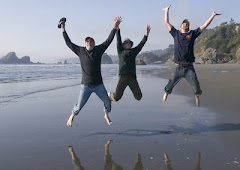“There are eight million stories in the naked city” . . . or
there are 20 million stories about trying to sign up for the Affordable Care
Act. (OK, you have to be 50 or older to think this is clever.)
I got a letter yesterday from the New Mexico Income Support
Division telling me I’ve been approved for Family Planning Medicaid, which
covers only “medical services for family planning: to prevent or delay
pregnancy or to manage family size.”
I’m really glad to hear that this service is being provided
through Medicaid. But seeing as how I’m 63 years old, I have two children aged
32 and 25, and a 4-month old grandchild, it’s unlikely—impossible—I’m
going to need these services. Every time I look to buy anything on the Internet
there’s an immediate ad on Facebook trying to sell me the same thing from a
different company, but the Income Support Division doesn’t know how old I am?
I already know I won’t qualify for regular Medicaid under
the ACA. But I had incredible luck —right time, right place—when several years
ago an insurance program in New Mexico called State Coverage Insurance (SCI)
rose from the ashes to provide coverage for folks like Mark and me. We’d never
had any health insurance, ever: we traded various products and services for
bills—pot for one of the kid’s birth, ski lessons for Mark’s hernia—or we paid
$50 a month for 10 years. Miraculously, the SCI program that targeted those who
made too much money to qualify for Medicaid but too little to possibly afford
private insurance saved my sorry 55 year-old butt. That’s the age when it seems
our baby boomer bodies start to fall apart: knee replacements, hip
replacements, autoimmune disease, high blood pressure, the dreaded cancer . . .
.
Now I have to buy a private insurance company policy that without
the tax credit subsidy from the federal government would bankrupt anybody:
five, six, seven hundred dollars a month for health insurance? Do I gamble and
hope I won’t end up in the hospital this one year I have to buy
insurance—before I’m of Medicare age—and go for the high deductible, low co-pay
plan? Do I play it safe and take the low deductible, high co-pay for those
doctors I unfortunately have to see fairly often knowing that like many others
my age hospitalization is probably on the horizon? Maybe I’ll just close my
eyes and wherever I click is what I’ll get.
I’m far better off than younger folks who will be faced with
high premiums for many years to come. We all know this is a paean to the
insurance companies, an extension of the already privatized health care
business with some concessions for coverage. Even Mexico, for Christ’s sake,
implemented universal, single payer health insurance last year. While we
continue to send junk food and subsidized corn their way maybe they’ll export
some health insurance al norte.
So, my friends, LOL, in all its ambiguity: lots of luck (or lust),
laugh out loud, laugh on Lipitor, or lean on levity but don’t spend too much
time trying to figure out why this country is so fucked up.

